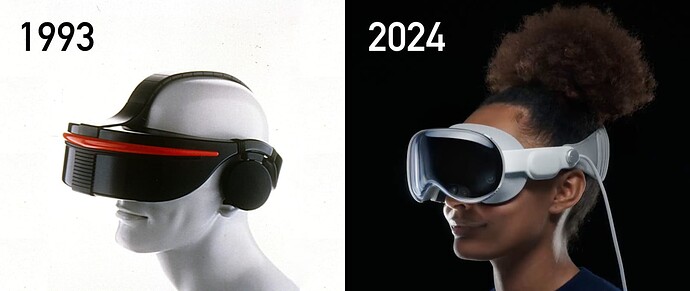It now allows hair. (Which is highly convenient underwater.)
. . . . . . . . .
![]()
Oh. I thought that was meant as a counterweight.
You may be right.
Looking closer, they’re clearly part of the device.
Now I want one.
But seriously. What happened. Is there really no sane middle ground between clunky abomination facehugger and direct computer brain connection implants?
It’s impossible that miniaturization failed us this hard for three decades. The computer stuff doesn’t need to sit on the head, that can be tucked away somewhere else.
But if it’s not a technical problem, but that immersion can only be achieved by forcing our biological interfaces into weird contraptions, unless they can be bypassed some day – does this mean those devices will still roughly look the same thirty years from now? ![]()
And what happened to pocked-sized laser guns? I simply have no space for a warship in my backyard.
Not saying the future is underwhelming, but man… really?

At a minimum, you need two independent displays and their driver electronics in close proximity to the eyes. (But not too close: you need to control the exact distance fairly precisely.) And the ability to miniaturize those is limited by human vision more than by the electronics.
Virtual reality is also a high bandwidth operation, and the fastest way to move data from one place to another is over (preferably short) physical wires (or fiber optics).
The 2024 version does have a wire coming out of the headset, so probably most of the electronics are remote. So blame the optics for the bulkiness.
Of course, having something heavy attached to your face for an extended period is ergonomically disastrous. Which is probably part of why VR goggles haven’t really succeeded, even in applications where they would seem to make sense.

